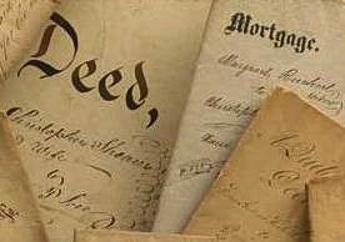For various reasons, some contaminated properties cannot be cleaned up to pristine conditions. Risk-based cleanup methods used throughout the department's various environmental cleanup programs allow some properties to be cleaned to specific levels, such as residential or non-residential, based partly on current and future land uses. In order to protect human health and the environment from any contamination remaining at these properties, the property owner and department, and in some instances the U.S. Environmental Protection Agency (EPA), put specific tools and controls into place. The department, through long-term stewardship, makes sure these tools and controls remain in place until they are no longer needed.
Engineering Controls
Engineering controls are physical measures taken at the site to contain or otherwise limit the spread of the contamination. An engineering control could be a physical barrier between the contamination and humans, animals or the environment, such as warning signs, fences, caps and slurry trenches. Engineering controls may also be used to reduce the contamination levels, such as extraction systems and treatment systems. Engineered controls are a common cleanup tool, but require ongoing evaluation, inspections, monitoring, maintenance and periodic repairs in order to remain effective over time. Engineering controls for specific site's are usually included in that sites remediation plan. For more information, review the department's Engineering Controls at Hazardous Waste Remediation Sites - PUB2886 fact sheet.
Institutional Controls

Institutional controls are administrative or legal instruments used to restrict the land use or activities that can occur at the site, more commonly known as activity and use limitations. Institutional controls are a viable risk management tool for clean ups when they are durable, enforceable and run with the land. Durability is a concern given that the institutional control may be forgotten, regulatory agencies may fail to monitor property use effectively or property users may simply ignore the restrictions. Institutional controls may be used either alone or in combination with engineered controls to ensure their ongoing effectiveness.
There are four institutional control categories:
- Enforcement and permit tools - These are legally binding, enforceable documents, issued under state or federal authority. This group of controls includes permits, administrative orders, judgements and consent decrees. Most enforcement agreements are binding on only the signatories, and the property restrictions do not bind subsequent owners.
- Proprietary controls - These controls can be implemented between two parties without the intervention of any federal, state or local regulatory authority or agency. They have their basis in real property law and rely on legal instruments placed in the property chain-of-title, such as an environmental covenant. The enforceability of proprietary controls, including ones with environmental restrictions, is typically subject to state law. The most widely used proprietary control in Missouri is the environmental covenant, which is based on the Missouri Uniform Environmental Covenants Act, or MoECA, found in Missouri Revised Statutes sections 260.1000 to 260.1039, RSMo. The law, which became effective Jan. 1, 2008, creates a uniform standard for environmental covenants that increases their reliability when used as part of the cleanup of contaminated sites. The act does not apply to above ground or underground storage tank sites, as defined in section 319.100, RSMo. Environmental covenants are intended to restrict or prohibit human activities and property use in a manner that will prevent exposure to contamination. Covenants help ensure the land use controls are reliable and enforceable for as long as they are needed to protect people living and working on or near these sites. For more information about MoECA, review the department's The Missouri Environmental Covenants Act - PUB2414 fact sheet.
- Governmental controls - These controls are usually implemented and enforced by a state or local government. They include things such as zoning restrictions, ordinances, statutes, building permits or other provisions that restrict land or resource use at the site. Examples of governmental controls in Missouri include:
- The Registry of Abandoned or Uncontrolled Hazardous Waste Site - Also referred to simply as the Registry, is a list of sites in Missouri that are contaminated with hazardous waste. Missouri's Registry Law, section 260.440, RSMo, which went into effect in 1983, requires the department to maintain the Registry and make it available for public review. This law authorizes the department to file notices in the property chain-of-title and mandates that buyers are informed of the contamination and any changes in property use are approved by the department.
- The Missouri Water Well Construction Code is a state regulation that sets specific standards for wells constructed in areas designated as sensitive areas under Code of State Regulations 10 CSR 23-3.100.
- The department and City of St. Louis entered into an agreement, or Memorandum of Understanding, that allows a city ordinance to be used as an institutional control. Ordinance #66777 prohibits the use or attempted use of groundwater as a potable (drinking) water supply, and the drilling or installation of wells to be used for a potable water supply, within the corporate limits of the City of St. Louis.
- The Jasper County Environmental Contamination Ordinance requires soil testing for regulated contaminates on Superfund designated properties associated with new construction of a dwelling, dwelling unit or other child occupied facility or recreational area. The ordinance also requires that all existing wells be tested for metals when the property is transferred or sold.
- Informational devices - These are non-enforceable, purely informational documents that alert individuals about risks from contamination. They may be in the form of deed notices, which alert anyone performing a title search to important information about a particular property. Informational devices also include public health advisories, LTS data and information tracking systems and other lists maintained by regulatory agencies.
